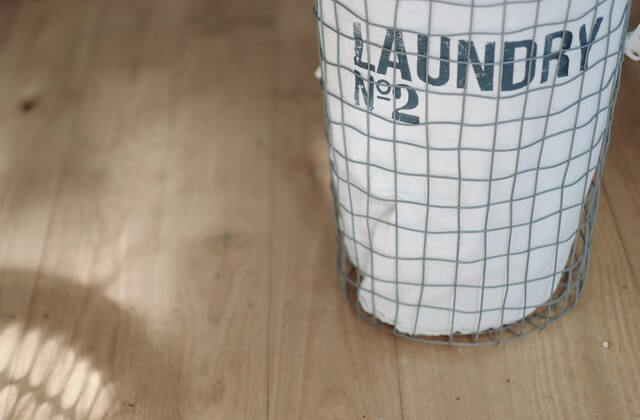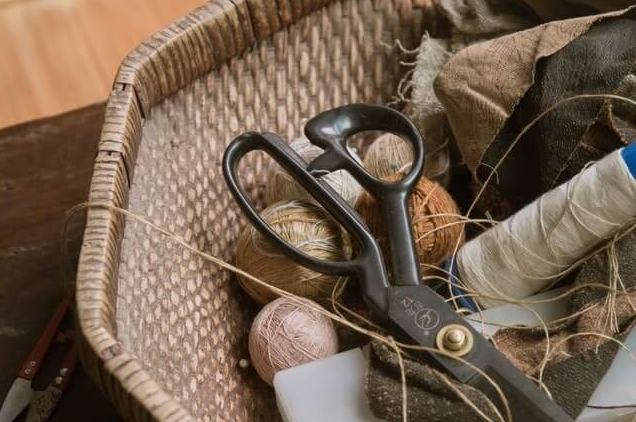How To Take Care of your Clothes
One of my biggest pet peeves is when a favorite piece of clothing starts pilling, showing loose threads, fading, or otherwise looking worn. The best way to prevent this is to learn to take care of your clothes. This will extend their life in your closet.
Plus, clothes that are in good condition make you look more polished and prevent you from having to constantly find replacements. It’s the easiest way to save time and money on your wardrobe. Learning to properly care for clothing is a great idea if you’ve invested in some high-quality items that you want to maintain, if you want to preserve sentimental pieces so they last a lifetime, or if you’re on a tight budget that doesn’t allow for extra clothing expenses.
If it’s a little too late for some of the items in your closet, now would be a great time to book a closet cleanse. We’ll help you sort through the pieces that are past their prime and create an individualized list of closet essentials that you will wear for years to come.
Preventative Measures
If memorizing a bunch of rules to take care of your clothes sounds overwhelming, not to worry: There are plenty of simple preventative measures you can take.
The first tip to prevent clothing from prematurely looking worn is to choose high-quality pieces. This means you should look for well-sewn garments, durable textiles, and dyes that won’t fade or transfer. A high-quality garment is thoughtfully constructed to stand the test of time, whereas lower quality alternatives tend to prioritize an appealing price point and rapid production at the expense of good construction.
This is why high-quality items sometimes cost more. When shopping, be sure to examine the fabric closely. Is the stitching tight and even? If it’s stretchy, does the fabric bounce back after being stretched? Start to pay attention to these details. You’ll thank yourself later when you get to skip your annual jean shopping trip. If you need help finding long-lasting pieces, reach out and we will help you find some great options!
Once you take these high-quality finds home, there are a couple of simple steps you can take to prevent them from getting damaged. One of these is proper storage. There are certain items that are prone to getting stretched out if hung up, such as heavy sweaters and knitwear, high-stretch jersey fabrics, and pieces with heavy embellishments. To prevent these items from stretching or warping, keep them neatly folded. Place tissue paper between any pieces with sequins or rhinestones so that they don’t snag other garments.
Additionally, many of us are washing our clothes more often than we need to. Machine washing — and drying especially — can cause premature damage to our clothing. Avoid this by washing less often. Don’t wash just because you wore the item once or twice. If the garment has a stain that is not able to be wiped off or if it has an odor, then it’s time to throw it in the laundry. Besides, what’s not to love about less laundry?
Laundering
Speaking of laundry, washing garments correctly is essential if you want to take care of your clothes. This is where things get a little more complicated as different fabrics have different needs. However, it’s more than worth taking the time to learn. Start with these rules of thumb, but always read the garment tag for full washing instructions.
- There are certain items that should never be machine washed. These include intimates, such as bras with underwire or padding, lace, embroidery, embellished garments, ties, and sweaters. These are all too delicate to put in the wash, even on the delicate setting! All the tumbling can cause rips, snags, and warping of your favorite pieces. Though it’s not recommended to throw them in the washer at all, some of the damage can be reduced if they are washed in an intimates bag on a gentle setting. Instead, it’s best to hand wash them.
- Pay attention to water temperature. Most of us already know that hot water encourages the bleeding of fabric dyes. For this reason, the hot setting on the washer is best reserved for white clothing and natural undyed fabrics. Bright colors, dark or saturated colors, and indigos should be washed on the cold setting. Somewhere in between? Warm is probably fine, but cold is always safest.
- Choose the right detergent. Sometimes, a bad detergent can damage your clothing by promoting fading and deterioration. Opt for detergents with plant-derived ingredients that preserve color. These will be safer to use when hand washing delicates, too, which you would otherwise need a special detergent for.
- Beware the dryer. The dryer is especially important to avoid for cotton and wool which will shrink. Instead, lay these items flat on a towel to dry to preserve their shape. Other items may need to be line-dried if the fabric deteriorates in the high heat of the dryer, such as items with elastic. Your high-stretch jeans and bras should never go in the dryer for this reason.
Tailoring and Repairs
Sometimes fabric holes and damage occur no matter how well you take care of your clothes. You don’t always have to throw these damaged items away! Take them to a trusted tailor or cobbler instead. You will be amazed by how these items come back to life with a little help from a professional. Just be sure to take them in as soon as the damage occurs for the best results. The damage will only get worse and less reversible with time!
While tailors are great for fitting your clothing, they can also help with clothing repairs. Take your clothes in if a loose hem needs to be fixed, a fabric hole needs patching, a loose button needs to be resewn, or a zipper needs replacing. Knitwear tends to be a little more complicated. Fortunately, you can send your sweaters to AlterKnit for virtually invisible mending of holes. If a repair of your clothing is possible, it usually makes financial sense to fix the defect rather than replace the entire item. Take your clothing in and see what solutions they can offer you.
A cobbler will be able to repair your leather accessories. I’ve gone to my cobbler to punch a new hole in a favorite belt, shine and de-scuff a pair of dull leather heels, and resole boots that were getting worn down. They can even restore leather handbags and wallets. This is a time when you will notice the perks of investing in high-quality items; damage can be repaired time after time because of the quality materials and construction.
Wrap-Up
You shouldn’t have to spend your hard-earned time and money each season on replenishing your closet with new favorites. It’s exhausting! The constant cycle of buying and throwing out clothes is what makes us settle for mediocre options. If you’re going to invest in a wardrobe you love, it makes sense to take care of your clothes. Fortunately, it’s not as hard as it may seem. Follow these guidelines from your initial clothing purchase to any necessary repairs years later, staying proactive at each step, and you’ll have pieces that you can keep for a lifetime.



